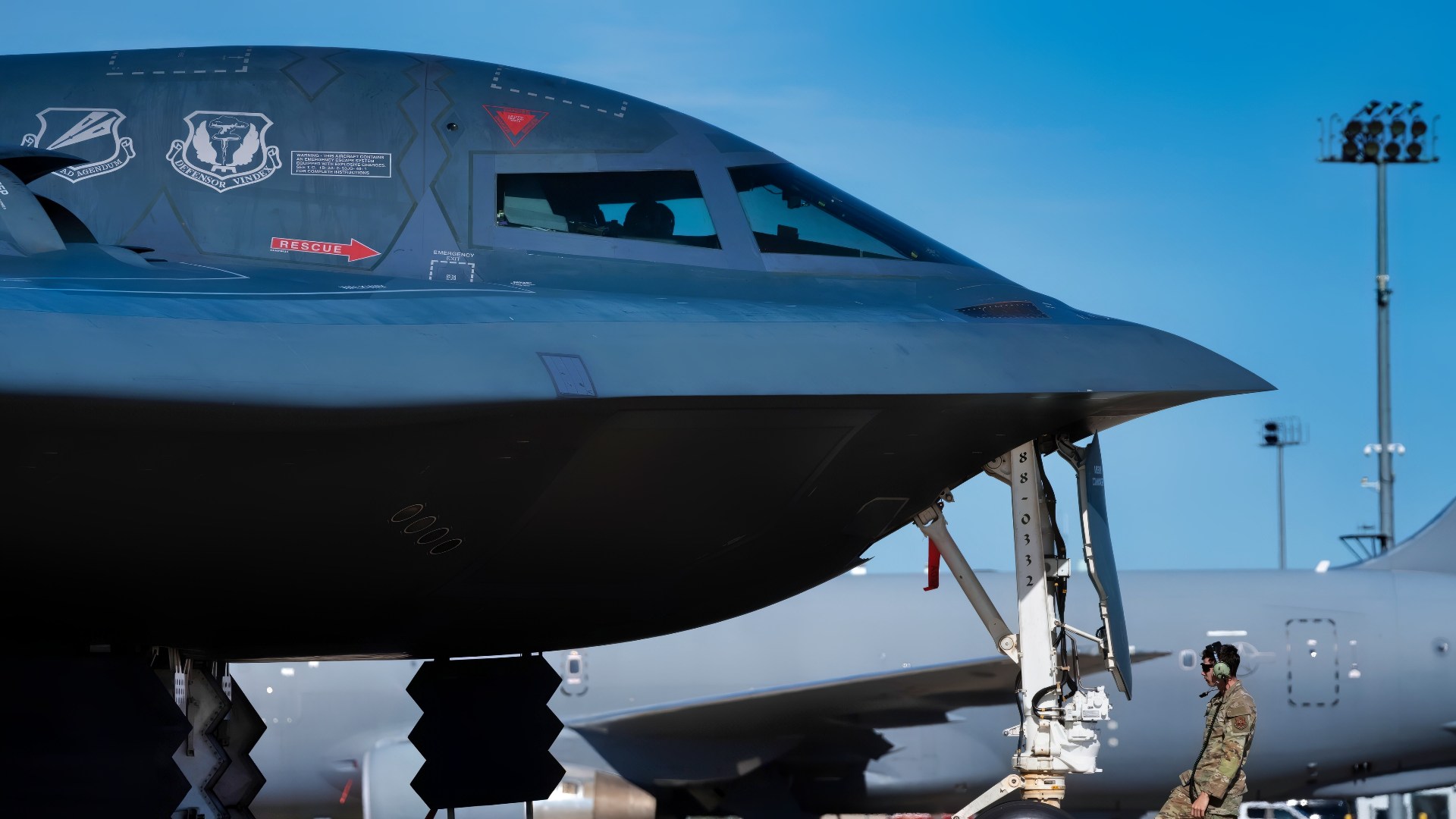Key Points and Summary – The B-2 Spirit stealth bomber demonstrated its enduring relevance and capability during the June 2025 “Operation Midnight Hammer” strikes against Iranian nuclear sites.
-Supported by fighter escorts, seven B-2s successfully penetrated Iranian airspace, evaded sophisticated air defenses like the S-300/S-400, and delivered GBU-57 Massive Ordnance Penetrator bombs, achieving mission success.

A U.S. Air Force B-2 Spirit is prepared for operations ahead of Operation MIDNIGHT HAMMER at Whiteman Air Force Base, Missouri, June 2025.
-This performance highlights the B-2’s significant upgrades over its 35-year service life, including enhanced stealth (thermal management, coatings), faster processors, and new weapons integration like the MOP and the B-61 Mod 12 nuclear bomb, keeping it a potent strategic asset.
The B-2 Spirit Stealth Bomber Dominates
Eluding Iranian radar and air defenses with a stealthy bat-like wing-body configuration, radar-absorbent materials, electronic warfare, high altitude, thermal signature management, and forward-operating fire support, seven B-2s this summer conducted a clandestine surprise attack over Iran. Pentagon leaders said the aircraft used massive, precision-guided earth-penetrating bombs to destroy or degrade three of Iran’s nuclear sites during the strike.
“The lead B-2 dropped two GBU-57 Massive Ordnance Penetrator weapons on the first of several aim points at Fordow. As the President stated last night, the remaining bombers then hit their targets as well, with a total of 14 MOPs dropped against two nuclear target areas,” Chairman of the Joint Chiefs of Staff Gen. Dan Caine told reporters June 22.
That the B-2s would be effective may not seem surprising, given that Iranian air defenses and radar had likely been decimated by Israeli F-35s and ground-fired missiles for more than a week. Caine explained that the B-2s were also supported by fourth- and fifth-generation fighters conducting suppression of enemy air defenses. This suggests any remaining Iranian air-defense threats were destroyed in advance of the B-2 attack.
“Once over land, the B-2s linked up with escort and support aircraft in a complex, tightly timed maneuver requiring exact synchronization across multiple platforms in a narrow piece of airspace, all done with minimal communications,” Caine said.
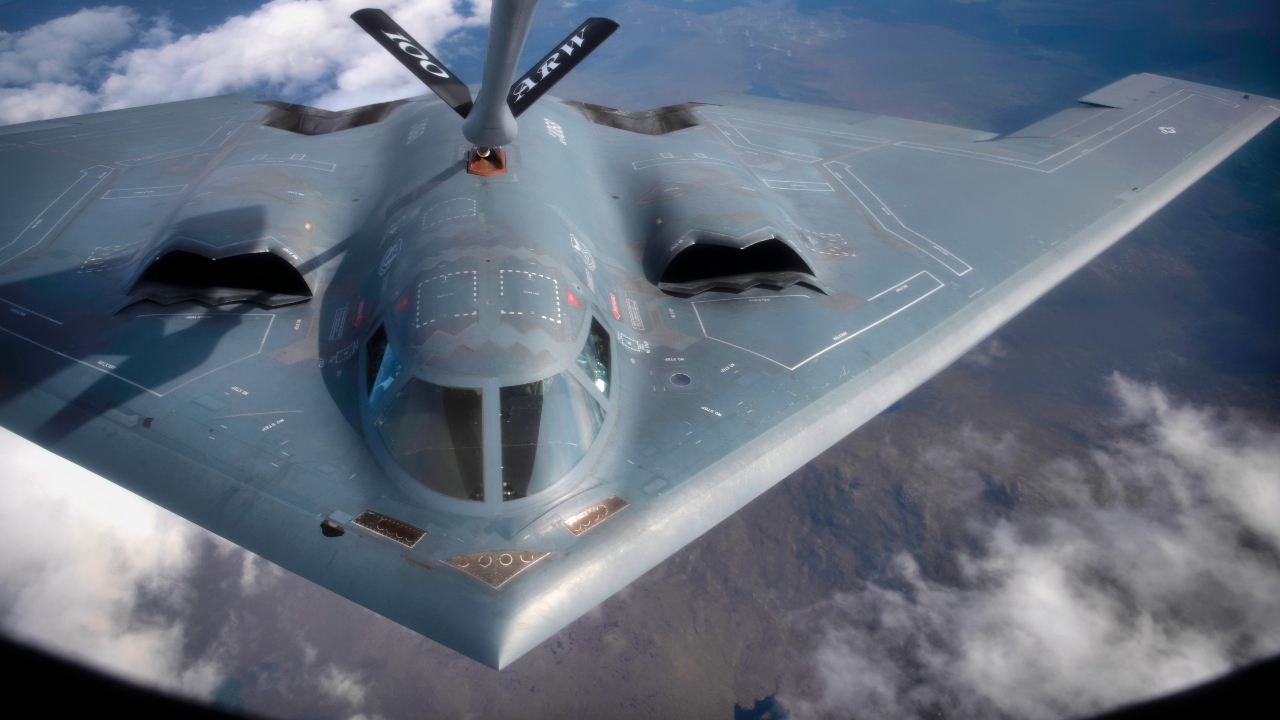
A U.S. Air Force B-2 Spirit assigned to the 509th Bomb Wing, Whiteman Air Force Base, Missouri, is refueled by a KC-135 Stratotanker assigned to the 351st Aerial Refueling Squadron, RAF Mildenhall, during the Bomber Task Force training exercise over England, Aug. 29, 2019. Training with partners, allied nations and other U.S. Air Force units contributes to global readiness and enables the strengthening of enduring and strategic relationships throughout the theater. (U.S. Air Force photo by Tech. Sgt. Emerson Nuñez)
Stealth B-2 Eluded Air Defenses
Iranian weapons and ground commanders seemingly were unable to detect—or at least unable to target and shoot—U.S. warplanes. U.S. Defense Secretary Pete Hegseth was clear that the Pentagon is “unaware” of any Iranian shots fired at U.S. aircraft during the B-2 strike.
The successful attack is an extremely significant achievement. Iran operates some Russian-built S-300 and possibly S-400 surface-to-air missiles. Modern variants of these weapons are increasingly enabled by digital networking, target-sharing technology, longer ranges, and an ability to detect aircraft at greater distances on a larger number of frequencies.
In recent years, Russian state-aligned media reports have made repeated claims that advanced Russian air defenses can detect and destroy stealth aircraft; this has not been confirmed.
The successful Pentagon and Israeli operations over the summer suggest that Israeli and U.S. F-35s are quite capable of finding and destroying air defense installations and establishing air supremacy.
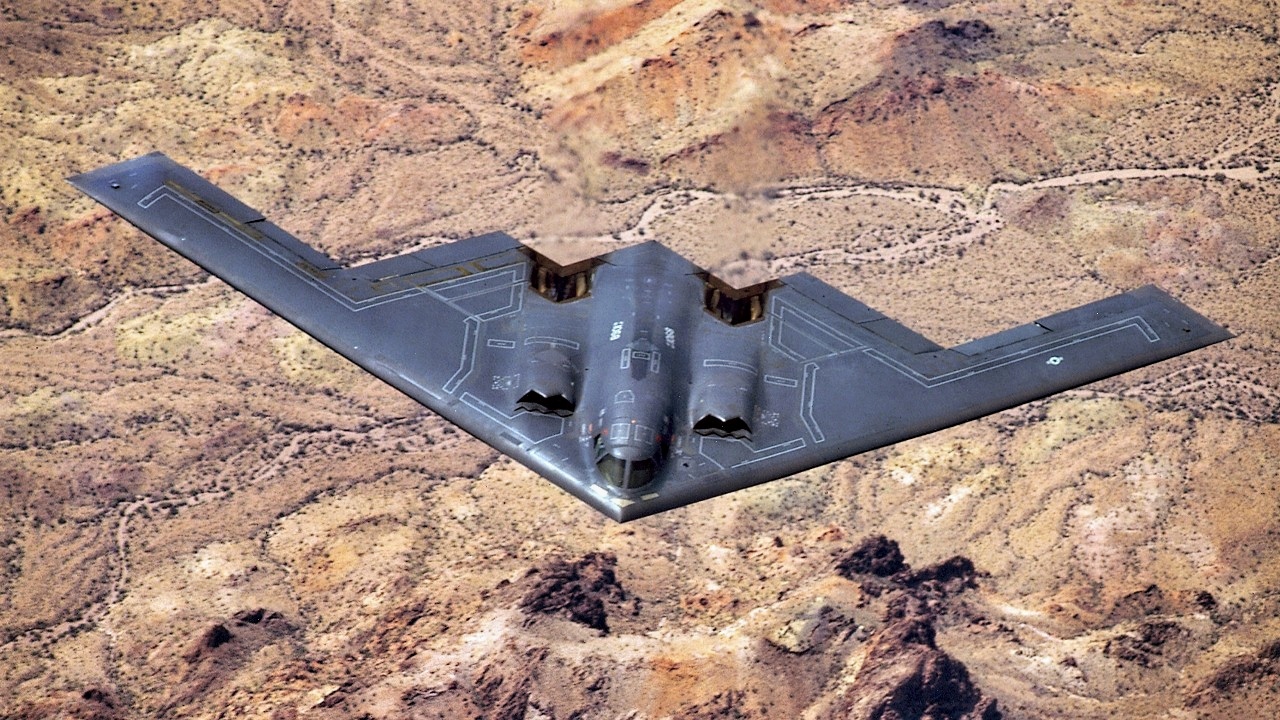
B-2 Bomber U.S. Air Force. Image Credit: Creative Commons.
B-2 Modernization
While a successful B-2 combat performance is certainly no surprise, there are several additional tactical and technological variables likely woven into Operation Midnight Hammer that raise questions about Pentagon breakthroughs in modernization and operations.
In a special Air Force briefing on Operation Midnight Hammer, Commander of Air Force Global Strike Command Gen. Thomas Bussiere said the mission strengthened a sense of collective resolve that indeed the B-2 needs to surge into future decades. Military Watch reported that President Donald Trump is interested in ordering more B-2 bombers, which have strung together a series of successful missions over time.
The B-2’s performance in Kosovo, Afghanistan, and Libya certainly confirmed its combat effectiveness, and the B-2 Spirit has received significant upgrades throughout its three decades of service Since its first flight in 1989, the B-2 has become an almost entirely different aircraft. The upgrades it has received likely contributed to the success of the summer 2025 mission and the continued relevance of the B-2.
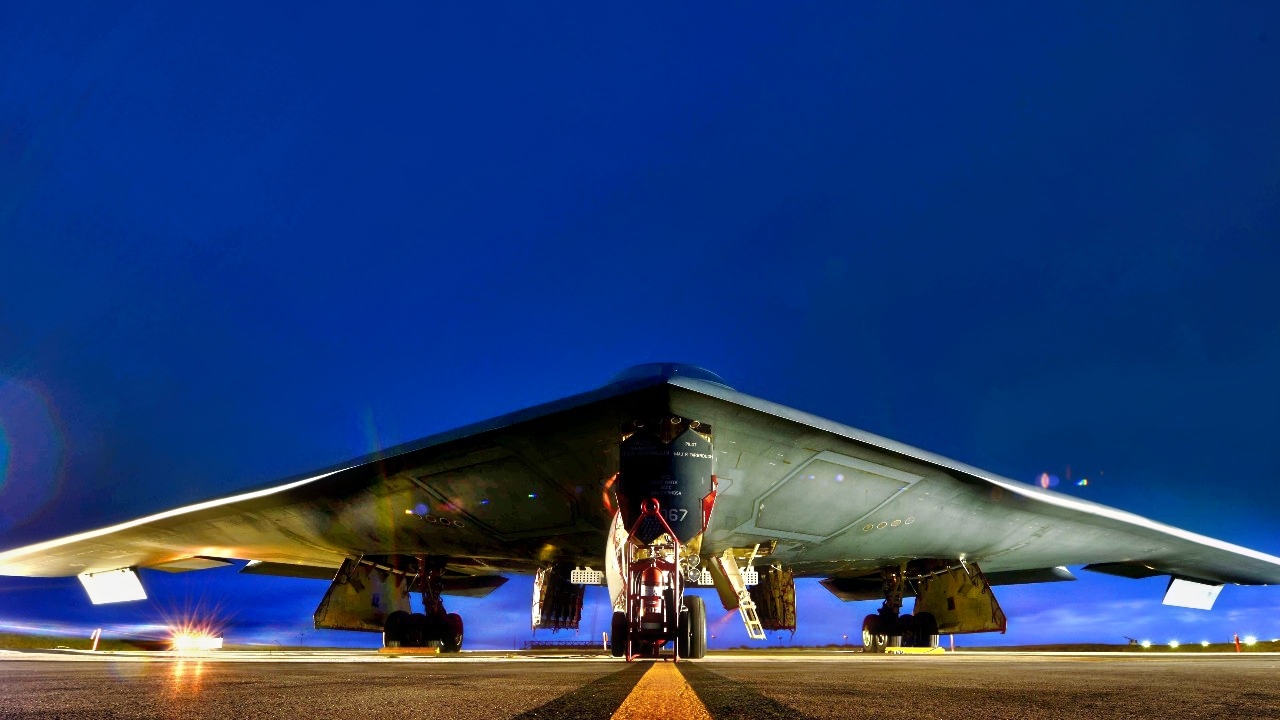
A U.S. Air Force B-2 Spirit aircrafts deployed from Whiteman Air Force Base, Mo., sits on the parkway after landing from a local training flight at Andersen Air Force Base, Guam, Jan. 17, 2017. Close to 200 Airmen and three B-2s deployed from Whiteman Air Force Base, Mo., and Barksdale Air Force Base, La., in support of U.S. Strategic Command Bomber Assurance and Deterrence missions. USSTRATCOM units regularly conduct training with and in support of the Geographic Combatant Commands. USSTRATCOM, through its global strike assets, helps maintain global stability and security while enabling units to become familiar with operations in different regions. (U.S. Air Force photo by Tech. Sgt. Andy M. Kin)
Advances in Russian and Chinese air defenses have required the Air Force to ensure the B-2 would remain hard to target. Especially concerning is the claim these systems can spot stealth aircraft. This does not mean they can be targeted successfully, but the Air Force has been clear that the threat equation has greatly intensified in recent years.
New technologies incorporated into the B-2 include a 1000-fold-faster computer processor, cockpit and weapons alterations, and a number of stealth enhancements
Today’s B-2 likely has vastly improved stealth properties in areas such as thermal management, materials to reduce acoustical signatures, and radar-absorbent coatings. Details related to stealth enhancements are not likely to be available, but there are almost certainly enhancements that decrease the aircraft’s heat signature, making it less detectable to radar and infrared sensors. If an internally concealed engine emits a much smaller heat signature, the aircraft flies at temperatures closer to the surrounding atmosphere, therefore making it less detectable. Newer composite materials may have been added, exhaust emissions have likely been adjusted, and weapons developers are almost certain to have devised new ways to suppress the aircraft’s electronic signature while still enabling communication.
Improved stealth is critical to the continued relevance of the B-2. The aircraft is designed to evade both lower-frequency surveillance radar, which discerns something is there, and higher-frequency engagement radar able to lock on and destroy a target.
Enhancements to the platform have likely significantly increased the B-2’s ability to evade both types of radar detection and maintain high-value enemy targets at risk against a modern, technologically advanced network of air defense systems.
Weapons
The B-2 handles its weapons differently, too, as it is now configured with new software, fire control enhancements, and interfaces to enable greater flexibility and a much more expansive arsenal.
For example, the B-2 can deliver the GBU-57 Massive Ordnance Penetrator, which was in development for many years. Satellite images of the bomb attacks on Iranian sites reveal somewhat small holes of entry. This is quite deliberate—Air Force has been developing earth-penetrating weapons for many years.
They are configured with pointed or sharp front ends to penetrate deep into the earth and are armed with a delayed fuse that keeps the bomb from detonating until it reaches the desired depth underground. This naturally maximizes damage to targets deliberately buried beneath the earth.
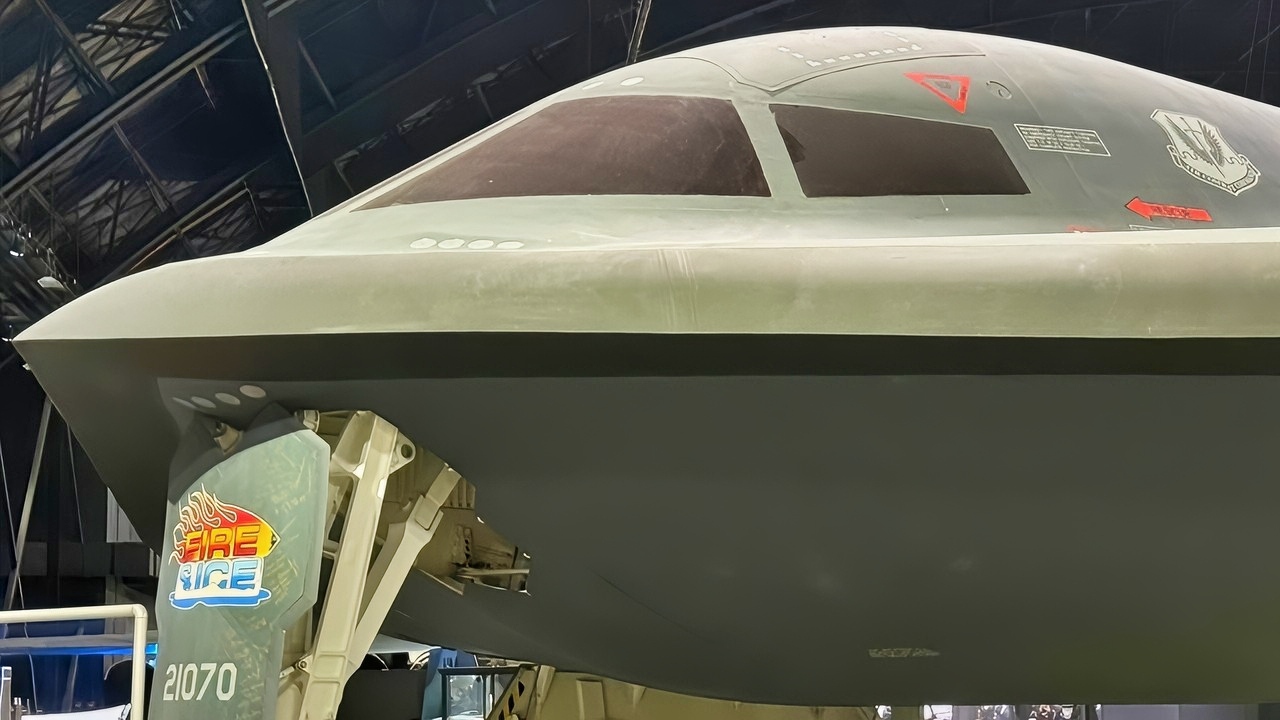
The Mighty B-2 Spirit Stealth Bomber. Image Credit: National Security Journal.
The B-2 also will be armed with an upgraded B-61 nuclear bomb. The B-2 has tested and air-dropped the B-61 Mod 12 nuclear bomb.
Unlike previous B-61 variants, Mod 12 combines several attack attributes into a single weapon. This means a more limited yield nuclear attack, proximity detonation, earth-penetrating strike, or large-scale explosive effect all can be achieved with a single B-61.
About the Author: Kris Osborn
Kris Osborn is the President of Warrior Maven – Center for Military Modernization. Osborn previously served at the Pentagon as a highly qualified expert in the Office of the Assistant Secretary of the Army—Acquisition, Logistics & Technology. Osborn has also worked as an anchor and on-air military specialist at national TV networks. He has appeared as a guest military expert on Fox News, MSNBC, The Military Channel, and The History Channel. He also has a Masters Degree in Comparative Literature from Columbia University.
More Military
China’s New Aircraft Carrier Has 1 Big Advantage over the U.S. Navy
The B-21 Raider Stealth Bomber Has a New Problem: The Government Shutdown
The B-1B Lancer Bomber Has a Message for the Air Force
The B-2 Spirit Bomber Has 1 Big Advantage over Russia and China
Nuclear Aircraft Carrier USS Nimitz Will Be Retired Next Year: It Might Be a Big Mistake


